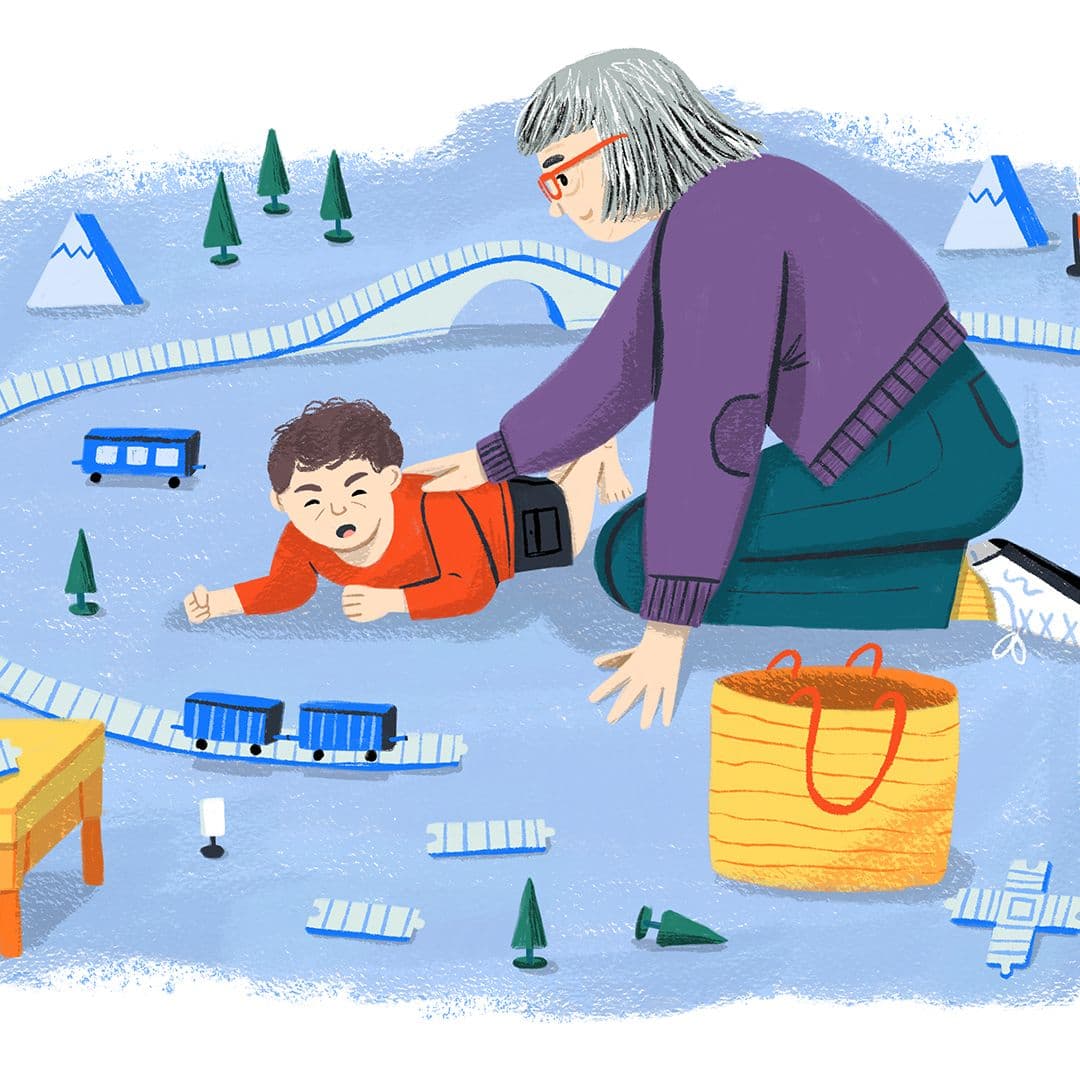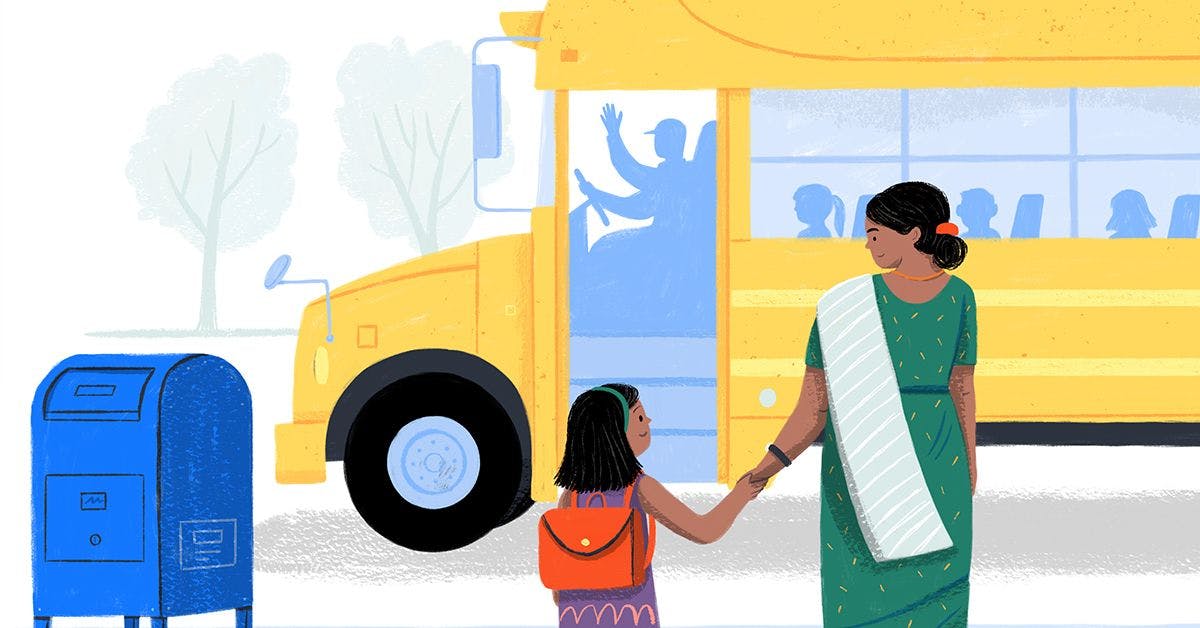
Children’s disruptive behavior can sap work productivity. We have a solution

By Dr. David Grodberg, Aug 24, 2021
Kids and teens have a lot to be anxious about these days. From fears about catching COVID-19 to worries about fitting in once they return to the classroom, many children and adolescents — mine included — are understandably uneasy. We’ve all had to adapt to so many changes in the last year and a half.
Some anxiety is normal. In fact, some anxiety is actually good. For example, when crossing the street, a person who is anxious about safety will look both ways and be more careful. However, due to a variety of genetic and environmental reasons, many children experience anxiety that interferes with their well being. A child’s anxiety can disrupt their social, emotional, and academic and home life — and impact parents and caregivers’ routines too.
Children experiencing high levels of anxiety may develop specific fears or phobias (e.g. separation fears) or more general worries leading to a constant need for reassurance. Sometimes, anxiety takes the form of physical symptoms (like a tummy ache), and, very often, anxiety can lead to avoidant behaviors (like tantrums). This in turn leads to high levels of caregiver stress and makes it difficult for parents and caregivers to be focused and productive at work or get adequate rest while at home.
Fortunately, there is support for working parents and caregivers: Brightline’s innovative program for children with anxiety that meets families where they are across a full range of both clinical and non-clinical needs. To get a sense of how well Brightline works for families, we observed 10 families with children who met the diagnostic criteria for an anxiety disorder who then completed Brightline’s 12-session cognitive behavioral therapy supported by parent-focused skills training and digital tools. I’m happy to share that 100% of these parents and caregivers reported that their kids saw a decrease in anxiety symptoms.
Before we dive into the review, let’s look at how anxiety affects children and adolescents.
Naturally, kids and teens experience fear. Taking tests, getting shots, and being alone in the dark are three common ones. But when those occasional anxieties start to overtake a child’s life, they can make life difficult. Approximately 4.4 million (7.1%) children between the ages 3 to 17 experience diagnosable anxiety. Worryingly, the number of children and adolescents affected by anxiety has recently doubled due to the harmful effects of the COVID-19 pandemic.
Children who suffer from anxiety disorders experience negative effects not only in their day-to-day lives, but also in development. The National Scientific Council on the Developing Child found that persistent anxiety affects how the brain develops, potentially impacting memory and other brain functions. Children who have anxiety disorders perform less well in school, pulling parent and caregiver focus from work.
That said, anxiety is very much treatable. And through Brightline’s virtual model of care, treatment is more accessible than ever for families with children.
Because anxiety is experienced on a spectrum, not every child who experiences anxiety needs clinical-level care. Some families get all the help they need through Brightline’s self-guided digital resources or short-term coaching programs informed by cognitive behavioral therapy — or a combination of the two.
Those children with anxiety disorders, however, are likely to also benefit from clinical intervention. For them, Brightline offers therapy and, if necessary, medication management. To gauge how effective Brightline’s program is for kids and teens with anxiety, we looked at 10 families with children who met the diagnostic criteria for an anxiety disorder at the outset, then completed 12 therapy sessions with Brightline. We measured the outcomes through diagnostic surveys, including the Patient Reported Outcomes Measurement Information System (PROMIS), developed by the National Institute of Health to evaluate treatment progress for a number of areas, and the Clinical Global Impressions - Improvement scale (CGI-I).
Our review shows Brightline works for children experiencing anxiety. Here are the numbers:
100% of children showed clinical improvement from anxiety disorders — with 90% showing significant clinical improvement — based on the Clinical Global Improvement (CGI-I) scale.
70% of parents and caregivers reported their children’s anxiety symptoms improved significantly based on the the parent proxy anxiety measure of the Patient Reported Outcomes Measurement Information System (PROMIS).
The bottom line: Children became less anxious with Brightline’s help. For more details, download our summary: Brightline program alleviates pediatric anxiety.
The continued spread of the coronavirus, shifting back-to-school policies, and changing mask mandates continue to provoke anxiety today. With all this on kids’ minds, comprehensive pediatric behavioral health care is especially vital for families now. Without it, many working parents and caregivers have to devote more of their time and energy to their children’s behavioral health needs and, as a result, become less effective at home and at work.
We can’t entirely eradicate anxiety, but we do want to make sure we give families the tools to manage anxiety so they can lead happy, healthy lives. Today, we’re happy to know Brightline brings much-needed and effective support for anxiety — and are excited to help more families as they continue to navigate this pandemic.
Dr. David Grodberg is Brightline’s chief psychiatric officer. Board certified in both adult psychiatry and child and adolescent psychiatry, David is currently a faculty member at the Yale School of Medicine and served as medical director of the Yale Child Study Center Outpatient Clinic.